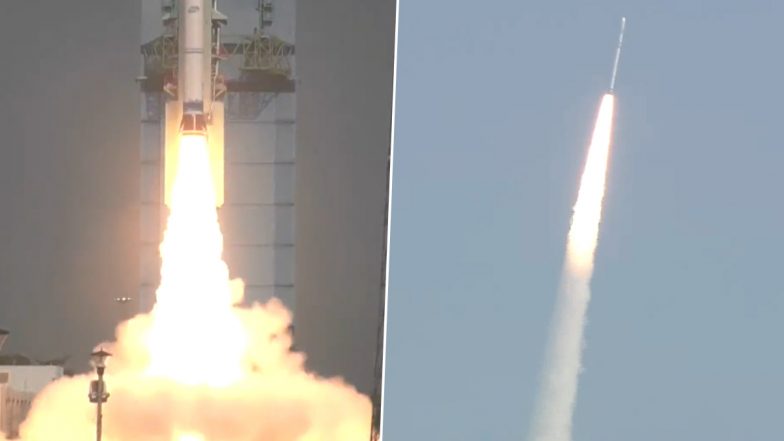Live Classes

SSLV-D2:ISRO launches smallest rocket
India’s space programme received a major boost on Friday when the ISRO’s Small Satellite Vehicle (SSLV-D2) lifted off from the Satish Dhawan Space Centre at Sriharikota on Friday. Last August the rocket’s maiden flight was a partial failure because it could not place the satellites it was carrying in their intended orbits. The glitch has been rectified. The three passengers on the rocket’s successful foray are testimony to the global space economy’s scope and potential.
This rocket will carry three satellites with it.
An 8 kg satellite developed by 750 government school girls from all over the country shared space with another small payload created by an American software company and a conventional earth observation satellite, weighing about 150 kg, developed by the ISRO.
The first test flight had failed
The first test flight of SSLV failed on August 9 last year. According to ISRO, investigation into the failure revealed that there was a vibration disturbance for a short duration on the Equipment Bay (EB) deck during the separation of the second stage. The vibrations affected the Inertial Navigation System (INS), which resulted in sensor malfunction of the Fault Detection and Isolation (FDI) software, resulting in mission failure as expected.
Opportunities in the Space Industry
Space industry observers believe that the sector is poised for a three-fold expansion in the next two decades, propelled by the miniaturisation of satellites and the growing presence of a range of private players. Small satellites have utility in fields as diverse as education, defence, earth sciences, emergency-related data services and smart power grids. In most parts of the world, these satellites hitch onto conventional rockets.
With its PSLV (polar satellite launch vehicle), ISRO carved a niche for itself in the traditional launch segment. But in its 44-year history, the space research agency has averaged less than five launches a year. Today’s data-driven world requires more frequent rocket launches. Private players, especially in China and the US, are stepping up to this challenge. Elon Musk’s SpaceX, for instance, launched an orbital mission once every six days last year. Such rockets can be assembled, on-demand, at a fraction of the cost of conventional satellites in three to four days; the turnaround time for the PSLV, in contrast, is at least a month.
Private sector plans to operate SSLV technology
The ISRO plans to transfer the SSLV technology to private players. In 2020, the government set up the Indian National Space Promotion and Authorisation Centre (IN-SPACe) to enhance the diffusion of ISRO’s research. The launch of India’s first private sector-developed rocket last year is an early indication of the initiative’s success. The presence of more than 100 start-ups testifies to the appetite of private players for the space sector. However, the country has a long way to go to become a significant player in the small satellite-driven space economy its share is about 2 per cent.
Conclusion
The private sector’s learning curve is likely to be steep. The success of such players in the US, including Musk’s venture owes much to the enabling partnerships forged with NASA. India’s premier space research agency would do well to emulate its American counterpart.
Small Satellite Launch Vehicle (SSLV-D2)
What is a Small Satellite Launch Vehicle?
Features
Low cost, short turnaround time, flexibility to accommodate multiple satellites, minimal launch infrastructure requirements, etc.
Importance